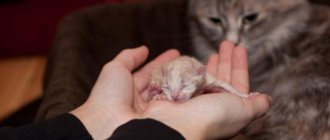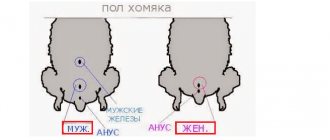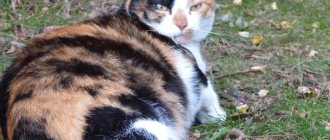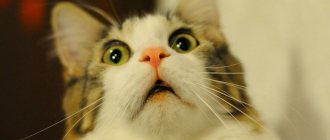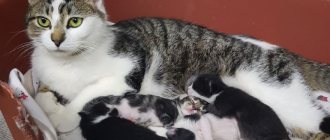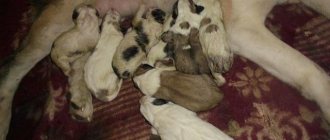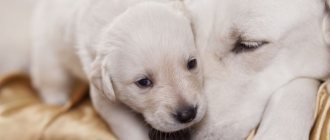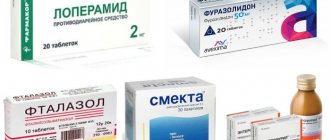Some owners notice that the cat does not produce milk after giving birth. This situation is not the norm, but it can be quickly dealt with if you pay attention to the problem in time and know how to help your pet. If the female is not able to feed the kittens or she does not have enough milk, then it is possible to use traditional methods that have a positive effect on lactation or purchase special medications at a veterinary pharmacy.
When does milk appear after kittens are born?
Owners are not always able to determine the problem and the degree of its complexity. When a female is pregnant, the volume of her mammary glands increases, and if pressure is applied to them, a translucent discharge is noticed. Some cats release colostrum immediately after she gives birth. A healthy female who has given birth should begin to produce milk immediately; sometimes the process is delayed for 1-2 days. At this time, kittens drink colostrum, which is also nutritious and necessary for babies.
Veterinarians note that a cat that has given birth for the first time may not produce milk for 3-5 days after the birth of kittens. This situation is the norm and is more often recorded in artificially bred breeds.
Caring for cats and kittens after birth
If your cat has stopped pushing and her belly has become tight and bloated, this means labor has stopped. Mild contractions and fever may be noticeable for some time. Try to ensure that no one disturbs the cat after giving birth.
As a rule, a cat that has given birth does not want to leave its place for several days. Therefore, try to make her stay there as comfortable as possible. Move the water and food bowl closer to the cat's area. After giving birth, change her bedding to fresh and clean one. Also make sure that it is, if possible, made of smooth material. Otherwise, the newly born kittens will grab it with their claws.
Pay attention to whether the cat ate the afterbirth during labor. If so, then the cat will most likely refuse to eat for some time. And perhaps she will have diarrhea because of this. In this case, offer her water rather than food more often. You should not give milk to a woman in labor. Avoid guests these days. Their visit can make the new mother cat nervous.
Try to make sure your cat drinks enough fluids after giving birth. Be sure to include vitamins in her diet: phosphates, fish oil, and calcium. About 10 o'clock, after the last kitten is weaned, the cat should not be given liquid.
If during pregnancy or after giving birth the cat has a lack of calcium, then seizures may begin. Be sure to call your veterinarian if the seizures continue for several hours. At this time, you can give your cat sweet water or glucose.
A cat can give birth to up to 10 kittens at a time. If there are a large number of babies, then try to help the mother cat care for them. Born kittens are blind. They can only find the nipple thanks to
Source
Reasons for lack of milk
For many firstborns, the birth of babies is stressful, against the background of which lactation may decrease or disappear completely.
Sometimes a nursing cat, as soon as she gives birth, has little milk, but don’t worry. If the kitten drinks it regularly, the amount will soon increase. If the babies are constantly hungry, meow loudly and do not gain weight, then the owner needs to contact a veterinarian who will tell you how to increase the female’s lactation. A nulliparous or just given birth cat has no milk or quickly runs out of milk for a number of reasons:
- The influence of a stress factor. It is a common source of problems in pets who have given birth for the first time. As a result of the experience, the female’s milk often completely disappears.
- Various diseases. If the birth was difficult or protracted, then there is a high probability of inflammatory reactions in the birth canal or uterus. Purulent discharge from the animal’s genitals, reluctance to eat and a lethargic state help to find out about the problem. At such moments, the cat often leaves the kittens and hides in some corner.
- Lack of maternal instincts. Some females do not care at all that her baby is hungry or needs maternal warmth. A similar problem is associated with the lack of manifestation of instincts and is typical for cats of artificially bred breeds that gave birth for the first time.
- Unbalanced diet. The lack of milk is sometimes explained by an incorrect diet, in which the nursing mother does not receive enough vitamins and essential microelements. Owners should feed pregnant and newborn cats foods rich in protein and other nutrients.
- Hormonal disbalance. When a cat gives birth, the balance of hormones in her body is disrupted, which can affect milk production. In some females it begins to be produced a lot, while in others it disappears completely.
How to determine if a cat has milk
Like all mammals, milk in domestic cats is the first main food of newborn babies. Breast milk contains all the necessary nutrients, vitamins, macro and microelements for the normal growth and development of kittens at first.
It is extremely important that newborn kittens receive the very first portion of first-born milk - colostrum.
It is the first milk in mammals that contains specific substances (antibodies) from the mother’s body, which help protect the baby’s organs and systems from various infectious pathologies.
How can you tell if your kitten is hungry and not getting enough food?
Insufficient lactation in a female can be determined by the weight of the cubs.
If a female gives birth for the first time or repeatedly and her milk has disappeared, then the owners are not always able to immediately recognize the problem. When babies constantly meow and behave restlessly, you should immediately check the cat’s mammary glands by pressing on them. If milk is not produced or it comes in a small trickle, then you should contact a veterinary clinic. Other signs help to understand the development of the problem:
- The cat's reluctance to be near kittens. A female who has difficulties with breastfeeding more often abandons her offspring or stays near the babies reluctantly and for a short time. But not all cats exhibit this behavior; other individuals may continue to stay close to the kittens, try to feed them and care for them.
- Weighing babies regularly. If a cat produces milk in small quantities, then there is not enough milk for all the offspring, which is why the babies grow slowly and gain weight. Regular weighing helps to understand the development of the problem. If the female is healthy and lactation is normal, then the kitten gains more than 10 g per day.
When babies go hungry and don't get enough milk, they experience a decrease in body weight. The table shows approximate standards that the owner needs to follow:
| Age, months | Weight, gram |
| One month old kitten | 500—750 |
| 2 | 1000—1500 |
| 3 | 1700—2300 |
| 4 | 2500—3600 |
| 5 | 3100—4200 |
| Six months | 3500—4800 |
It is recommended to pay special attention to the color of the milk. When it turns yellowish or pinkish, this may indicate an inflammatory reaction in the cat's mammary gland, and immediate medical treatment is required.
How to start weaning?
After the kittens reach 4 weeks of age, they need to be taken away from the nursing mother for 2-3 hours to a separate room where a toilet, water and food are provided. The first few days, take it for one interval of 2-3 hours, then twice a day. As the kittens grow older, they will be able to stay on their own without their mother cat for longer and longer periods of time.
In ideal cases, you need to find another nursing cat and “throw” new cubs at her. In this case, you need to take a “donor” litter kitten and carefully wipe the foundling on it. Otherwise, the cat will not accept a baby that smells like another animal.
Their composition is radically different from that of cats, and therefore the use of such “ersatz” often leads to severe diarrhea. The latter, as you know, is deadly for small kittens! Babies can die from dehydration within hours.
We suggest you read: The simplest signs, symptoms and treatment in cats
What brands of “baby food” can I use to feed kittens? In our country, they are produced by famous manufacturers, such as Royal Canin, Beaphar, Canina.
Considering that they are not found in every pet store, it is advisable to consult with a veterinarian in advance. When using such tools, remember the following:
- You can find both liquid and powdered substitutes on sale, and the latter, as you might guess, must be diluted with boiled, settled and warm water before use. As a rule, it is necessary to comply with the same requirements and recommendations as in the case of baby food (i.e., it must be diluted thoroughly, without lumps, the temperature of the finished mixture is within 37-38° Celsius.
- Remember that there are milk formulas on sale intended for feeding adult cats. Such mixtures are ordinary skim cow's milk, from which all lactose has been additionally removed. Diverging slightly from the topic, we note that such food does not bring any particular benefit to adult cats (nor does it cause any harm). It can be given to kittens only in extreme cases, when there are no other options. Moreover, this should be done no more than two or three times, while searching for more suitable food for them.
Let's assume that you don't have milk or formula. What else can you give kittens? Experienced veterinarians say that babies can be given thick rice water two or three times. Of course, there are not enough nutrients there, but this thick jelly will allow the kittens to fill their tummies and fall asleep. At this time, you can also find a suitable milk formula for them.
What to do and how to improve lactation: effective ways
To correct the situation, you need to contact a veterinarian and rule out some pathologies such as mastitis.
If your cat has lost milk, you can cope with the problem or increase the amount of fluid using several methods that can be used at home. When a female exhibits other alarming symptoms and changes in behavior, it is important to promptly contact a veterinary clinic, where they will prescribe a series of laboratory and instrumental tests to help refute/confirm such diseases:
- mastitis;
- endometritis;
- purulent inflammation of the uterus;
- postpartum eclampsia.
If the lack of milk is associated with a hormonal imbalance, then therapy is used by prescribing the hormones necessary for the cat. The following medications are often prescribed for hormonal imbalance after childbirth:
- "Oxytocin";
- "Mastometrin";
- "Ovariovitis."
Before the birth of kittens, the owner must make a special place for the cat, which should be warm and comfortable, it is better that it is located in a darkened part of the room. It is important, especially in the first days after birth, to provide the female with peace and avoid stress. For a normal amount of milk, they monitor the diet of the cat who has given birth, which is fed cottage cheese, cream, fermented baked milk, and vegetables. Such products improve the functioning of the mammary glands and enhance lactation.
2 How to feed kittens with lactation deficiency
It is not difficult to understand that kittens do not have enough milk or that the cat has lost it altogether: the babies squeak loudly, worrying the mother, attempts to suck lead to nothing, and when pressing on the nipple, colostrum does not appear. When the cause is established and it is not possible to continue feeding naturally, the kittens are transferred to artificial nutrition.
If lactation stops on the first day of birth, the following measures should be taken immediately:
- 1. Kittens are given special “cat milk” - a mixture adapted to a natural product (sold in specialized departments for animals). It contains nutrients needed by babies. It is important to purchase such a product in advance, regardless of the cat’s condition during pregnancy.
- 2. If there is no cat milk substitute, you can prepare a mixture for feeding kittens yourself.
We recommend
What should a kitten be fed at the age of 2 months?
Cat's milk is a very high-calorie product with a high content of fat and protein. It is impossible to replace it with cow's milk: the reason is not only a lack of protein, but also lactose - kittens' bodies do not have the enzyme to digest cow's milk and its consumption can cause diarrhea.
Approximate feeding rations:
- 1. Condensed milk, water, full-fat yogurt (1:1:1), egg yolk: mix, heat slightly.
- 2. Beat the egg white into the boiled goat milk, add honey.
- 3. Goat milk, sugar and vegetable oil (half a teaspoon each).
- 4. Prepare any lactose-free infant formula, make it thicker than for children.
What to feed kittens if there is not enough mother's milk or no milk at all?
Immediately after birth and for 3-4 weeks, mother's milk is the main source of existence for babies. The lack of milk (agalactia) threatens newborns with starvation, and the lack of secretions in the mother (hypogalactia) threatens the underdevelopment of the cubs. Every owner of a furry pet who has given birth to kittens should know what to do if a cat does not have milk. The life and health of the offspring depend on timely detection of signs of lack of nutrition and the adoption of measures.
Read in this article
Feeding a nursing cat
A nursing cat is fed more often: up to 6-7 times a day, and portions should be small. The volume of food is increased by 10-15% of the usual daily intake.
The natural diet of a nursing cat-mother should consist of the following products:
- meat (veal, rabbit, turkey) and offal (liver) - up to 50% of the total daily requirement;
- boiled fish without bones - it can replace meat 1-3 times a week;
- dairy products (cottage cheese, yogurt, low-fat cream) – up to 30% of the daily requirement;
- quail and chicken eggs, boiled or raw – 1-2 pcs. in Week;
- chopped vegetables – up to 10%.
If a cat eats natural food, it must be given vitamin supplements intended for nursing animals, for example, Farmavit NEO for pregnant and lactating cats, 8 in 1 Excel Brewers, etc.
The lack of milk in a pet that has given birth should alert the owner. This phenomenon may be the result of stress, in which case rest and good nutrition will help. If milk is not produced due to pathology, the animal must receive veterinary care within 1-2 days after birth.


